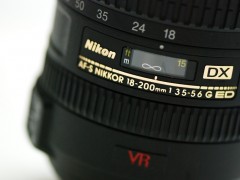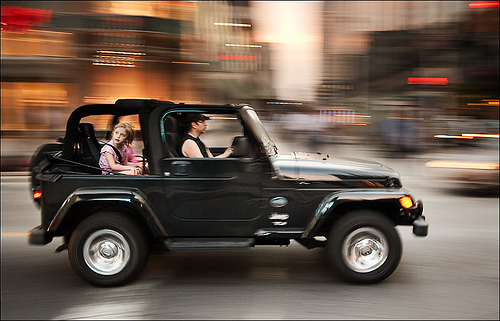
Image stabilization nowadays is a common feature available even in the compact cameras. The other day I was searching for a compact cameras in Canon Powershot series. And one thing that was common among all the cameras, be it Canon IXUS 510 HS (with 12x optical zoom) or Canon PowerShot S100 (with 5x optical zoom) is Canon’s intelligent IS — a feature that allows steady shots in every situation. While image stabilization is in market for a long time now, I was surprised by the claim “steady shots in every situation”. However you can get sharp and steady shots even without in-camera image stabilization or IS / VR lens (my previous article on how to get razor sharp images has it all).
So what sets image stabilization apart? I did some research to see how image stabilization actually helps in getting the sharp results. Here are some of the facts and myths that I discovered on the go.
But first…
What Is Image Stabilization?
Image stabilization is an awesome feature. It enables you to get crisp and sharp hand held shots. This feature neutralizes the effects of camera shake, if any while taking the shot.
This feature is either built in the camera or the lens. But the key function of this technology is to detect the motion blur caused by camera shake and correct the blurred image projected on the sensor before the sensor converts the image into digital information.
Image stabilization tries to compensate for the hand shakes and image blur common with hand held shooting; especially when shooting in low light (owing to slower shutter speed) or with long lenses (as greater magnification amplifies the blur).
All the major brands have introduced this feature. Some provide it as in-camera feature while others support this feature by incorporating the technology in the lens. Sony’s SteadyShot for instance is a built in camera feature while Nikon & Canon implement this feature through specialized VR (Vibration Reduction) / IS (Image Stabilization) lenses.
How IS / VR Actually Works?
I will try to keep it simple. The lens based image stabilization is implemented by using a floating lens element and in camera stabilization works by sensor shift technology.
In lens based implementation a gyroscopic sensor is used to detect the motion. When the motion is detected the floating lens element offsets the movement by initiating compensatory movement of the lens’s elements.
In sensor based implementation on the other hand, the sensor capturing the image is moved to counteract the motion of the camera; thus the name sensor-shift.
Be it lens-based IS or sensor-based stabilization, this feature simply ensures that the image remains stable prior to its conversion to digital signals.
When Do We Need Image Stabilization?
Image stabilization is factually of no use while shooting either at high shutter speed or slow shutter speed. At a high shutter speed any kind of camera shake or image blur is automatically negated owing to the fast speed of the shutter. And at slow shutter speed as in the case of long exposures the image will always be blurred whatever be the case. Also you will always need a sturdy surface or a tripod when shooting longer exposures.
Barring these exceptions, image stabilization comes in handy when you take hand held shots in low light. As a matter of fact shooting in low light slows down the shutter speed. This means VR or IS comes into play when shutter speed slows down to around 1/2 – 1/15 of a second.
Image stabilization also finds its application while shooting extreme close-ups or when using telephoto lenses. The slightest blur in both these cases can completely ruin the photograph and IS acts as the blessing in disguise.
Can I Use It For Action Or Sports Photography?
Image stabilization by virtue is only designed for and is capable of reducing the blur caused by normal, minute shaking of lens due to hand-held shooting. It however stands ineffective for preventing the motion blur caused by the movement of the subject or by extreme movements of the camera. In fact a fast lens which allows more light in at fast shutter speeds is a better investment for sports photography.
But some of the camera bodies and lenses, my Nikkor 18-200mm VR II lens for instance features an active mode to counteract more aggressive motion blurs; which can also help in capturing the panning shots.
Anyways IS has limited use while photographing action as you are already working with fast shutter speed. At such a high shutter speed, the camera shake is not a critical determinant of sharpness.

Do I Need To Turn IS Off When The Camera Is Mounted On The Tripod?
Yes, the readers manual suggests to turn it off when the camera is mounted on the tripod. This is not a hard and fast rule though. You may get sharp images with IS on or it may also ruin the image. The fact is that when the image stabilization is on, lens anticipates the vibrations in order to counteract the blur. However when it doesn’t detect any motion, it can act in a weird manner to cause the camera shake; thus the result — a blurred image.
But turning the IS / VR on, on a long lens can actually help in eliminating the chances of slight blur caused by wind (when the camera is still set on the tripod). In this case keeping IS on, on the tripod helps. Also the newer lenses are designed to combat this effect. So, please do refer your lens manual to see what does the lens manufacturer suggest.
Is Image Stabilization Worth The Extra Cost?
IS / VR lenses are costlier than their non-IS counterparts. Canon EF 70-200mm f/2.8 L IS for instances costs you around $2199 and its non IS version is currently priced at $1,339 approx. IS is valuable for a lens with such magnification.
Speaking of other lenses in general, you can find your investment in IS / VR lenses safer in most of the cases. If you love to shoot outdoors during the golden magic hour or in the blue hour go for it by all means. An IS lens can substantially improve the quality of your hand-held shots; which happens more often than mounting the camera on the tripod.
I am happy with mine. What about you?


Good article. Will recommend to my photography students. I recall when VR/IS lenses first came out the uproar from photographers (who didn’t understand what the lenses do) because they had VR/IS engaged and the subjects in their photos were STILL blurry!
Keep up the good work.
Matt Lit
Colorado Mountain College
photography educator
Olympus were at the forefront of in-body stabilization. All their cameras come with this feature so you save a lot of hard cash that would be wasted on buying IS lenses of different ranges. It makes sense to have in-body stabilization so you needn’t bother about your lens too much ;-). In fact the new OM-D E-M5 has a 5 axis stabilization!!